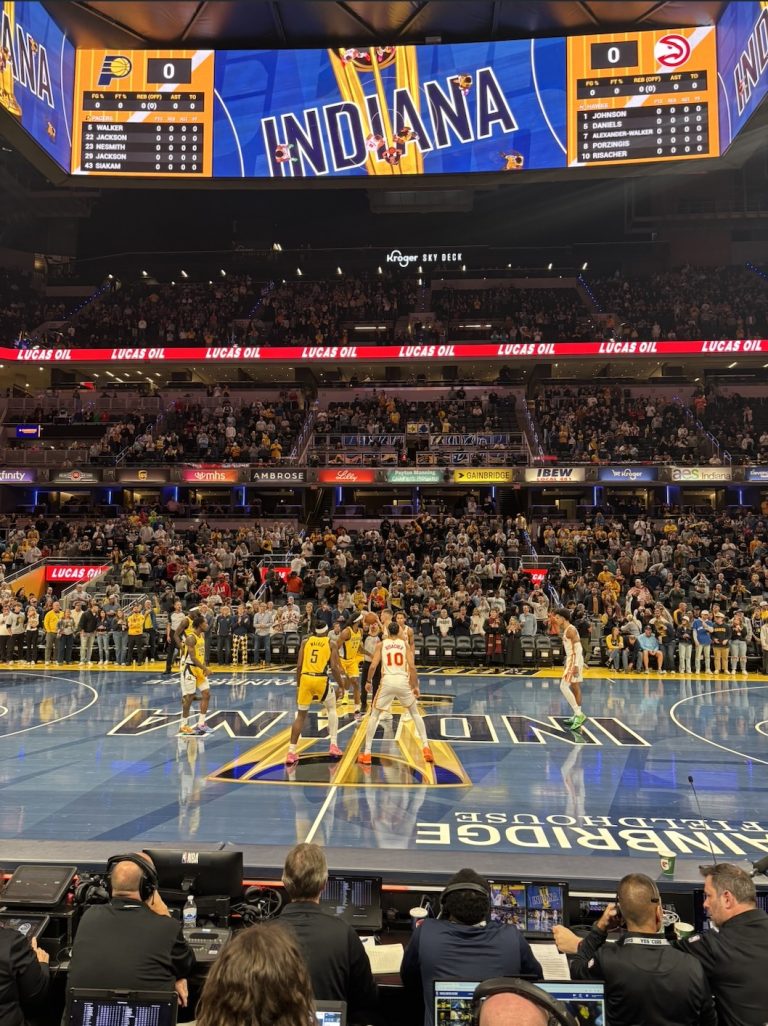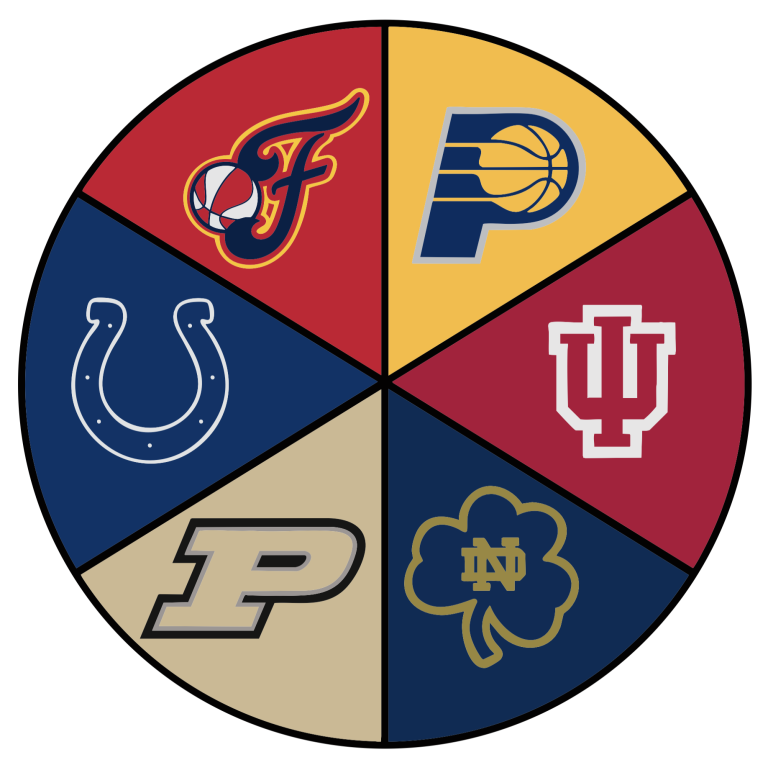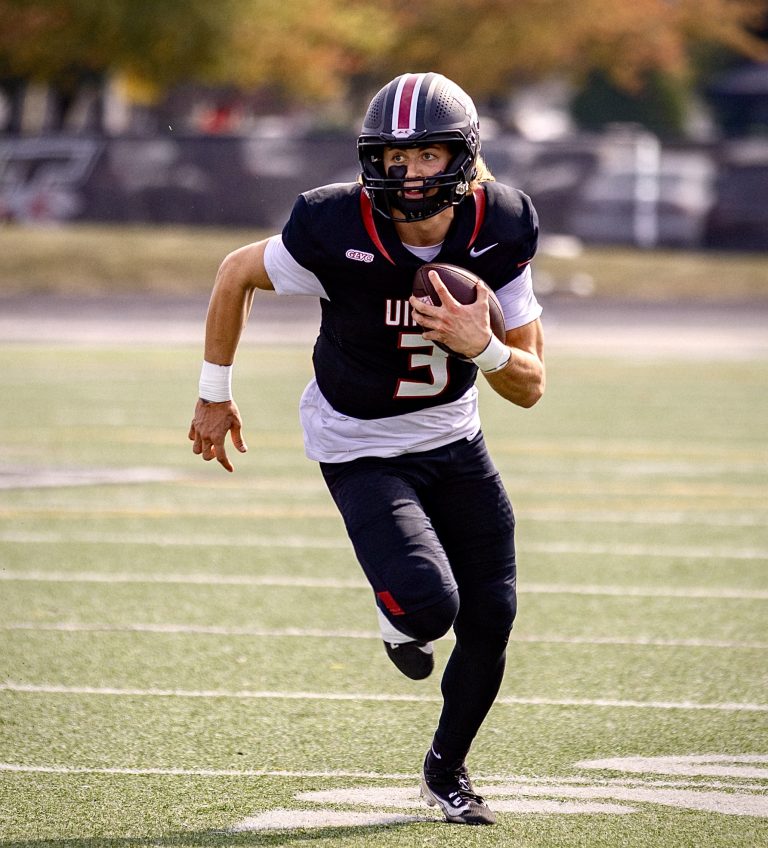Over the past 45 years, Title IX of the Education Amendments of 1972 has been known for its goal of striving for equality in athletics. This federal law provides protection from sex discrimination in educational programs. Title IX covers classes, student organizations, athletic departments and other public groups. It says “No person in the United States shall, on the basis of sex, be excluded from participation in, be denied the benefits of, or be subjected to discrimination under any education program or activity receiving… federal financial assistance.”
In athletics, women and men often are divided in two different teams based on natural abilities of each gender, such as strength and size. Because there are different teams, Title IX ensures that women and men are treated equally. Public and private schools must abide by this law if they receive any federal funding, including federal financial aid programs used by students. This means the University of Indianapolis, like most other private schools, must abide by this law.
There are three prongs under which a school can meet Title IX requirements in connection with athletics department by providing athletic participation proportionate to the student enrollment, demonstrating continual expansion of opportunity for the underrepresented sex, or fully accommodating the underrepresented sex, which would be women in the case of athletics.

According to Vice President for Intercollegiate Athletics Sue Willey, UIndy meets Title IX requirements under the third prong. She said the university, which has a higher percentage of female undergraduates, cannot meet the law on the first prong because of sports such as football, which has a roster much larger than any women’s sport. UIndy also cannot prove the second prong because many sports were previously added as a men’s team before a women’s team, and the university has one more men’s program than women’s. According to Willey, UIndy proves that it meets the third prong by surveying women about their experiences whether any of them want additional sports teams added and whether their student athletics experience is adequate to their expectations. Willey said that the women have responded positively on these surveys.
“Being women, we [Willey and Assistant Athletic Director for Business Operations Jennifer Mervar] can sleep at night knowing that the experiences of the men and women are the same,” Willey said. “We don’t have the inequities [now] that we had when I was here, which were pretty bad. So, to me, that’s gender equity.”
Willey played volleyball for UIndy before graduating in 1975. She said that being a female student athlete years ago was much different than it is today. When she played, she said, players were responsible for buying their own equipment, driving to games and were not given appropriate gym time or weight training.
“Having been a student athlete here, I can tell you that it has certainly changed a lot because there was no equity back in the day. But I feel comfortable…feeling like we’ve done a good job and worked hard on our budget and whatever else to make the men’s and women’s experience the same. There aren’t inequities like in travel or equipment or training. And so we work pretty hard to make sure, even though we have fewer women athletes than we have men athletes, that they are getting the same experience.”
Over the course of her 42 years of serving UIndy’s athletic department, Willey said that she has seen and addressed the gender inequities that she experienced as a student athlete.
“I have seen it [gender inequality], and I have gone through it, and it’s been addressed so that it doesn’t occur,” Willey said. “I just think that young women student athletes have played so long that they would never allow there to be inequities now. They’ve never known anything different than having pretty much equal opportunities. But if there was an issue that came up, we would certainly try and rectify that. And as an institution, we have a gender equity plan. And so we look at those things and try to make sure we do the best that we can, whether it’s facilities, training, or athletic training coverage.”
Not all student athletes see it the same way. After participating on the soccer team for two years, senior exercise science major Celine Ehret said that the football team seems to get preferential treatment over some of the other sports, but other than that, each of the other teams seemed to all be treated equally and respectfully.
“We definitely were put second class to football. I remember a time, we always had lifting at 7 a.m., and we were about to go on a break, and football needed to come in at our lifting time for whatever reason so our lifting time got moved,” Ehret said. “It was inconvenient for all of us, and it was just because football needed to take over our time that day. So we definitely have been treated second class to them… I don’t know if that is because we are a DII school and we have smaller facilities, or if it’s really just because they think that football is more important.’’
According to Willey, the athletics department allocates money differently than it used to. Instead of each team getting the same amount of money each year, the money is distributed based on each particular team’s needs for the upcoming season. Although, Ehret said that her opportunities in athletics was fairly equal with that of the men, she recalls a few instances where she felt that her team was not at a top priority.
“I know a lot of the other sports got a lot more gear than we did. Like the baseball team would get new gear every year and they were able to keep it, and we got new gear literally every few years and we always had to give our gear back. Sometimes we had really bad practice times,” Ehret said. “I remember one season where we had practice from six to eight at night and then six to eight in the morning the very next day, so that’s a pretty quick turn around. I know the coaches fight for space, so I don’t know if we just got the short end of the stick that year. I know were weren’t very successful for a long time.”
 Sophomore communication major and volleyball player Autumn Mayo said that overall, the university treats its athletes very equally. Though many of the athletes have the same opportunities in training, there is a clear difference in facilities for some of the sports, whether or not it pertains to gender.
Sophomore communication major and volleyball player Autumn Mayo said that overall, the university treats its athletes very equally. Though many of the athletes have the same opportunities in training, there is a clear difference in facilities for some of the sports, whether or not it pertains to gender.
“The biggest difference I can see at UIndy is the funding between different sports. For example look at football compared to track or swimming, the funding is clearly different. Although it is almost unfair to compare teams because of the number of participants… it is still interesting to see the differences in funding per student athlete regardless,” Mayo said. “The food and the weight room usage are equal for all sports in my opinion but the facilities for each individual team is very different. For example, the volleyball team used a classroom without showers or bathrooms as a locker room last school year and then the team was upgraded to a locker room with showers and what not.”
Willey said that since Mervar was hired last year, she has been helpful in constructing a plan and budget for each team for every season. According to Mervar, the fiscal year begins in July, and to prepare, soon she will send out a worksheet for all head coaches to fill out. On this sheet, each coach will have the opportunity to express his or her needs for the upcoming year and request how much he or she wants the budget to be, based on what he or she was allocated the previous year, and any additional expenses that the team will face in the upcoming season.
“Sometimes, they [the teams] will need to buy a uniform so that [budget] would increase in certain areas,” Mervar said. “That [the worksheet] comes back to me,. I review it, and Sue [Willey] and I get together and go through it, because we have a bottom line budget that we have to make within our department. We look over, ‘Who needs uniforms? Who needs this? Who has big purchases?’ And we try to allocate it that way. So she and I go over that, and then we send it over to the Business Office at the university in Accounting.”
Mervar and Willey agreed that they are more sensitive to gender equality because they are women and that inequality will not happen as long as they are in a position to make the budget and lead the department. Mervar said that coming into this program last year, she found that the athletic department was a very cohesive unit. She said that she was impressed that each sport was held to the same standard, and that all student athletes supported each other, despite what team they play on. Although laws like Title IX create a standard in equality among students, Willey said that she still sees inequalities at other schools.
“I see many other schools that have a male A.D. [athletic director] and they just aren’t sensitive to it [gender equality]. And so I do see where they [the athletics department] send their baseball team on a charter bus and they put their softball team in vans… I’ll see them put more emphasis on men’s basketball than on women’s basketball. And some [A.D.s believe], ‘The men’s team is supposed to win. The women-whatever they do is fine.’ No, I have the same expectations. You’re given the same resources, then we should expect success. I want success for all of our student athletes. So I don’t care if you’re male or female. I have the same expectation.”
Mayo said that the athletic department is very sensitive to both genders and the necessities for each. Over her two years playing volleyball for UIndy, she said that she has never had an issue with inequalities.
“I personally have never experienced any injustices or been treated as a lesser and I have never heard anyone complaining about these actions,” Mayo said. “Overall UIndy does a good job of keeping things equal in terms of student athletes needs and I haven’t found any problems in the way the teams are treated.”
Willey said that she makes sure that the department not only cares about the equality between genders, but between all sports teams. She wants all teams to have respect for each other and want everyone to succeed.
“We have the expectation that our football coach doesn’t think he’s any better than our tennis coach,” Willey said. “I mean, we’re all in this together. Some schools, people only care about their program and what they get for theirs and that they excel.”
Mervar said that the students athletes at UIndy cheer on each other, and the atmosphere of the department is supportive.
“Coming here, I was utterly impressed going to different competitions and how other coaches would come support male, female, different sports, you know not just women’s basketball watching men or men watching women basketball. But across the board the camaraderie here is very supportive…I think that’s the expectation.”
Ehret said that she has seen multiple teams cheering each other on and the coaches make a strong impact to drive their players to support one another.
“My coach always kind of encouraged us to go and see other team, [and] the volleyball team a lot. Every time there was a volleyball game she would tell us about it and tell us to go as a group,” Ehret said. “We would go and encourage all the other sports. I don’t see a lot of football players going out to other sports, but I definitely see swimmers and wrestlers and sometimes baseball players. Overall I think it [support] is pretty evened out except for football which gets a lot of recognition.”
Junior supply chain management major and football player Collin Timmons said that football does draw the biggest crowd and receives more attention, but he sees multiple other athletes supporting each other, and that other sports draw crowds as well.
“I think, any school you go to there are going to be a lot more people at football games. I think UIndy is really good because we support other sports,” Timmons said. “Not just football, I see a lot of people go to track meets and basketball games. I think we support well in other sports but yeah, you can definitely tell that a lot of the money, and a lot of the crowd and stuff like that. I feel like that’s the same wherever you go.”
According to Willey and Mervar, the UIndy athletic department strives to continue upholding equality for each gender and athletic program on campus. Willey said that she is satisfied with the equality on campus and will continue to pursue equality for each gender with the same concern and promote equality and respect among all teams.







